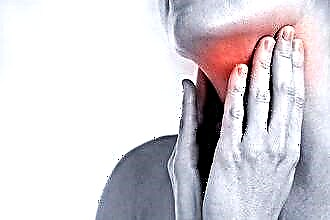Nasal lavage is a therapeutic and prophylactic measure during which the nasal cavity is irrigated with medicinal solutions. The main purpose of the procedure is to cleanse the ciliated epithelium from mucus and pathogens. Pathological processes in the mucous membrane negatively affect the work of the microscopic cilia lining the nasopharynx. Their dysfunction leads to impaired drainage of the nasal cavity, as a result of which there is a feeling of congestion.
 Nasal lavage helps to eliminate swelling and foci of inflammation in the ENT organs, thereby accelerating the evacuation of viscous secretions. The systematic implementation of cleansing procedures eliminates the clinical manifestations of acute and chronic rhinitis. The therapeutic effect is due to the antiseptic effect of drugs used to destroy pathogens in the nasal cavity and paranasal sinuses.
Nasal lavage helps to eliminate swelling and foci of inflammation in the ENT organs, thereby accelerating the evacuation of viscous secretions. The systematic implementation of cleansing procedures eliminates the clinical manifestations of acute and chronic rhinitis. The therapeutic effect is due to the antiseptic effect of drugs used to destroy pathogens in the nasal cavity and paranasal sinuses.
Purpose of the procedure
Can I rinse my nose with a severe cold? Irrigation of the nasopharynx is indicated for the treatment and prevention of respiratory diseases characterized by infection of the upper respiratory tract. Compliance with the basic rules for rinsing the nasal cavity helps to resolve catarrhal processes in the affected tissues, as a result of which the clinical manifestations of rhinitis will be eliminated.
Systematic nasal irrigation with medicinal solutions promotes:
- elimination of mucus hypersecretion;
- relief of nasal breathing;
- increased tissue reactivity;
- reducing the risk of recurrence of the disease;
- normalization of the functions of the ciliated epithelium;
- regeneration of tissues affected by inflammation;
- reducing swelling in the mucous membranes;
- washing out purulent exudate from the paranasal sinuses.
To achieve the desired therapeutic effect, nasopharyngeal irrigation should be started at the first symptoms of a cold. The relief of catarrhal processes prevents the spread of inflammation in the paranasal sinuses, which prevents the development of bacterial rhinitis and sinusitis.
Nasal irrigators
An irrigator is a special vessel with a tip that is used to cleanse the nasal passages of mucus accumulations. With its help, a stream of water is formed, which, under a slight pressure, washes out pathogenic microorganisms, dust particles and allergens from the nasopharyngeal mucosa. Rinsing the nose with a runny nose helps to eliminate the congestion within a few days. For the procedure, the following can be used as an irrigator:
- syringe;
- rubber bulb (syringe);
 sinus catheter;
sinus catheter;- neti pot;
- "cuckoo";
- Esmarch's irrigator.
Important! Failure to comply with the technique of the procedure can cause the accumulation of fluid in the paranasal sinuses, which is fraught with bacterial inflammation.
The simplest and safest irrigators include a syringe and a neti-pot, which is a small kettle with an elongated spout. In pediatric therapy, it is more expedient to use special plastic teapots with a round olive to irrigate the nasal canals. When using neti-pot, the liquid enters the nasal cavity under slight pressure, which eliminates the possibility of the solution entering the Eustachian tube.
Washing solutions
The effectiveness of local treatment of colds is largely determined by the therapeutic properties of the drugs. For the prevention of ENT diseases, it is advisable to use isotonic water (saline). It contains a minimum amount of sodium chloride, so it can be used without restrictions. Do I need to rinse my nose every day?
Daily nasopharyngeal irrigation is indicated only with an increased risk of developing a cold, as well as rhinitis, sinusitis or sinusitis.
To stop catarrhal processes in the ciliated epithelium, it is advisable to use solutions based on such drugs as:
- silver nitrate;
- sodium chloride;
- sea salt;
- potassium permanganate;
- boric acid;
- "Furacilin".
Antibacterial drugs are useless in treating the common cold caused by viral pathogens.
Treatment of children
How to wash the nose of a small child? For the treatment of rhinitis in children under 2 years of age, weakly concentrated saline solutions and such drugs as "Aqualor", "Dolphin", "Humer" are used as an antiseptic. Medicines based on isotonic water gently cleanse the mucous membranes from viscous secretions, thereby accelerating the regression of inflammation foci.
Irrigation must be carried out with the child lying on his back:
- turn the patient's head to one side a little;
- insert the tip of the teapot (syringe) into the upper nostril;
- sit the child down after 10 seconds;
- remove mucus accumulated in the nasal passages with a syringe or a rubber bulb;
- similarly cleanse the second nasal passage from mucus.
Important! When using a syringe, do not press sharply on the pear. Infusion of fluid under high pressure leads to its penetration into the ear canal.
Treatment for adults
It should be noted that the technique for rinsing the nose in adults is somewhat different from the method described above. For relief of symptoms of acute rhinitis, concentrated solutions based on sea salt, "Furacilin" and iodized water are used. To prevent stagnant processes in the paranasal sinuses, the procedure is performed in a standing position, bending over the sink:
- leaning forward a little, turn your head to the side;
- insert the tip of the syringe (syringe) into the nostril located on top;
- holding your breath as you exhale, rinse your nose until water starts pouring out of the second nostril;

- blow out the remains of mucus and liquid through the nose;
- flush the second nasal passage in the same way.
Important! Before use, the tip of the irrigator should be treated with a disinfectant solution ("Hydrogen peroxide", "Chlorhexidine").
Regularity of the procedure
How often should I rinse my nose? The frequency of nasopharyngeal irrigation depends on the degree of development of ENT disease. For preventive purposes, irrigation is carried out no more than 1 time a day in anticipation of seasonal diseases. As part of pediatric therapy, rinsing with saline solutions is undesirable for more than 2 weeks in a row. Hypertonic solutions dry out the mucous membrane, which can cause a decrease in local immunity.
How many times a day can you rinse your nose with sinusitis? To stop serious infectious and inflammatory processes in the ciliated epithelium, it is advisable to irrigate at least 4 times a day for 10-15 days. Regular cleansing of the mucous membrane from pathogens and purulent exudate accelerates the epithelialization of inflamed tissues.
Before rinsing your nose at home, you should consult your doctor. Despite the high therapeutic results from carrying out therapeutic manipulations, irrigation is contraindicated in case of hypersensitivity of the mucous membranes, mechanical damage, atrophic rhinitis and dermatoses. Ignoring contraindications often provokes an aggravation of the state of health, which is fraught with complications.

 sinus catheter;
sinus catheter;


